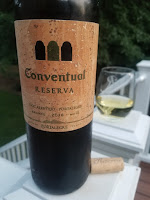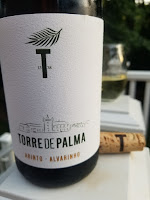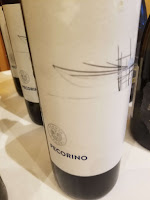 On my first day in Zagreb, at the Pink Day Festival, I discovered artisanal Croatian gin through Iguana Gin and quickly learned it was a rising phenomenon in Hrvatska. Little did I know that ten days later I would be introduced to the man and distillery who started this trend.
On my first day in Zagreb, at the Pink Day Festival, I discovered artisanal Croatian gin through Iguana Gin and quickly learned it was a rising phenomenon in Hrvatska. Little did I know that ten days later I would be introduced to the man and distillery who started this trend.  Knowing that I was completely free during my last full day in Croatia, the Zagreb County Tourist Board arranged a visit to the small city of Velika Gorica and the larger Turopolye region just south of Zagreb. This region has a vibrant history and in 1225 the inhabitants of Turopolje were recognized as free noblemen by King Bela IV and were exempted from serving the Town of Zagreb. And on January 7th, 1737 King Karlo III gave the noble municipality of Turopolje the official stamp to create a coat of arms. The coat of arms of all the noble families, wooden architecture, and more local culture and history is on display at the Turopolje Museum.Fortunately, my prudent and knowledgeable tour guide had more plans for me and had scheduled a visit to the area's only distillery: Brigljević Distillery. The craft distillery was founded in 2002 by Miljenko Brigljević and today is one of the oldest distilleries in Croatia. And in 2015, Brigljević decided to create a handcrafted gin which he called Flying Cat Gin. The recipe was based on London Dry Gin and featured juniper berries, fennel seeds, almonds, cinnamon, lemon peel, ginger, mint, and clove. In addition, the family has long ties to Turopolje where the Brigljević family was awarded the noble title in 1524. This family coat of arms is proudly displayed on the labels of the Brigljević liqueurs. I was met by Miljenko, his wife, and their daughter Gabriela -- who plans to succeed her father. The focus of this visit was not gin or liqueurs, but brandy -- and all distilled using the family's carport-ready copper pot still. Miljenko emphasized throughout the tasting that focusing on the spirit's aromatics is the central guide to his craft. Today he and Gabriela also train their palates through regular meetings of a Zagreb whiskey club, but in the past Croatians had little concept or tradition of aged spirits. In general, Croatian Rakija is served fresh and if aged, usually in the bottle or small glass wine fermenters. In order to create a truly world-class aged spirit, Miljenko had to experiment with various oak casks to determine which worked best not only with an individual spirit but also with the local climate (mostly temperatures) as a whole. And they are still experimenting.
Knowing that I was completely free during my last full day in Croatia, the Zagreb County Tourist Board arranged a visit to the small city of Velika Gorica and the larger Turopolye region just south of Zagreb. This region has a vibrant history and in 1225 the inhabitants of Turopolje were recognized as free noblemen by King Bela IV and were exempted from serving the Town of Zagreb. And on January 7th, 1737 King Karlo III gave the noble municipality of Turopolje the official stamp to create a coat of arms. The coat of arms of all the noble families, wooden architecture, and more local culture and history is on display at the Turopolje Museum.Fortunately, my prudent and knowledgeable tour guide had more plans for me and had scheduled a visit to the area's only distillery: Brigljević Distillery. The craft distillery was founded in 2002 by Miljenko Brigljević and today is one of the oldest distilleries in Croatia. And in 2015, Brigljević decided to create a handcrafted gin which he called Flying Cat Gin. The recipe was based on London Dry Gin and featured juniper berries, fennel seeds, almonds, cinnamon, lemon peel, ginger, mint, and clove. In addition, the family has long ties to Turopolje where the Brigljević family was awarded the noble title in 1524. This family coat of arms is proudly displayed on the labels of the Brigljević liqueurs. I was met by Miljenko, his wife, and their daughter Gabriela -- who plans to succeed her father. The focus of this visit was not gin or liqueurs, but brandy -- and all distilled using the family's carport-ready copper pot still. Miljenko emphasized throughout the tasting that focusing on the spirit's aromatics is the central guide to his craft. Today he and Gabriela also train their palates through regular meetings of a Zagreb whiskey club, but in the past Croatians had little concept or tradition of aged spirits. In general, Croatian Rakija is served fresh and if aged, usually in the bottle or small glass wine fermenters. In order to create a truly world-class aged spirit, Miljenko had to experiment with various oak casks to determine which worked best not only with an individual spirit but also with the local climate (mostly temperatures) as a whole. And they are still experimenting. Barrelina Apple Brandy First Cask (50%)
Barrelina Apple Brandy First Cask (50%)This brandy is doubled distilled from local apple cider made from four apple varieties, including Pink Lady and Granny Smith, and aged 18 months in American oak barrels. Distilled in 2017 and bottled in 2020. Very harmonious between the apple aroma and flavors combined with the oak-driven vanilla and honey..
Barrelina Apple Brandy Teatro Vaniglia (55.1%)
This brandy is doubled distilled from local apple cider and aged for 24 months in barrique barrels made from American oak by an Italian cooperage. Distilled in 2018 and bottled in 2021. This brandy sizzles with apple aromas and flavors with notes of vanilla throughout. Very smooth at cask strength.
Barrelina Pear Brandy Quarter Cask (50%)
The double-distilled perry is aged four years in American oak quarter casks. Distilled in 2018 and bottled in 2022. This is a lengthy brandy with vibrant fruit and slight spices.
Dark Forest 8-Year Pomace Brandy (44.1%)
This grape brandy was made by double-distilling four varieties of grapes grown in Baranja, Slavonia. The brandy was first aged for two years in a Slavonian oak barrel and then six years in a Bordeaux wine barrel. Distilled in 2013 and bottled in 2021. Expect complexity. Baked raisins and fig on the nose and then earthiness, raisins, honey, and more throughout the long finish.
I also tasted several upcoming attractions of malt whisky and brandies aged in unique barrel sources such as Laphroaig and Chateau Lafite Rothschild. Innovation and experimentation are continual processes at Brigljević Distillery.


















































